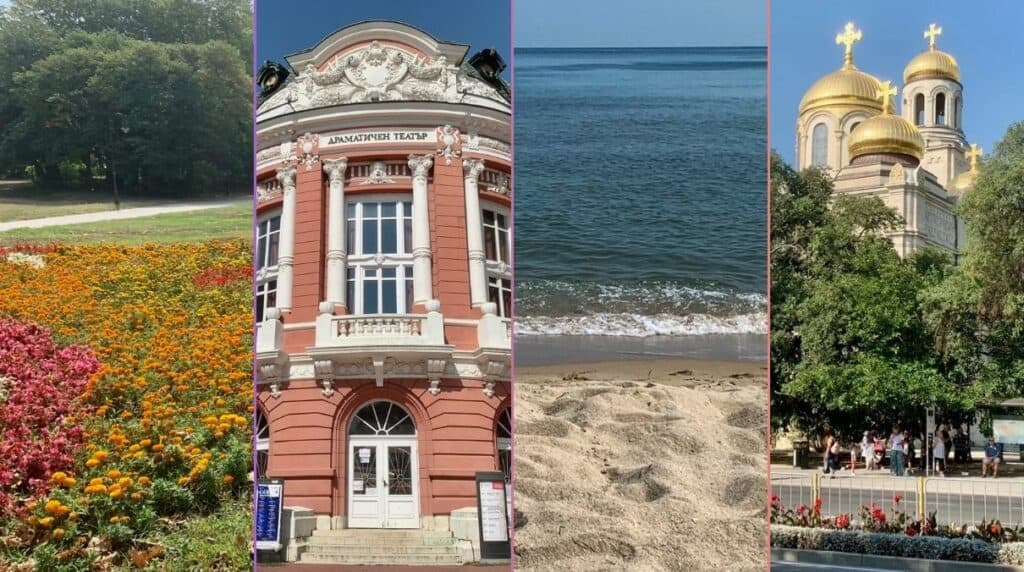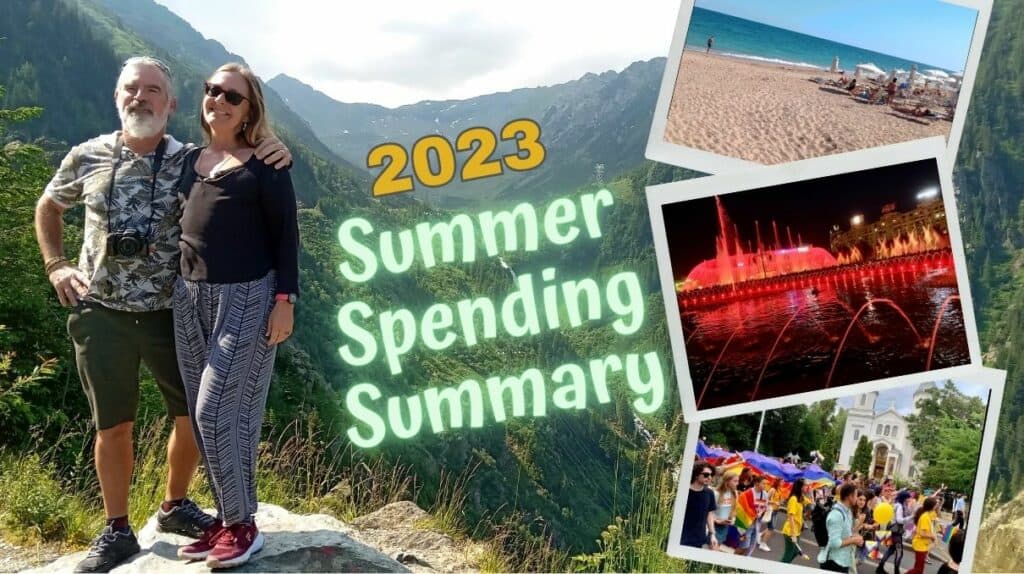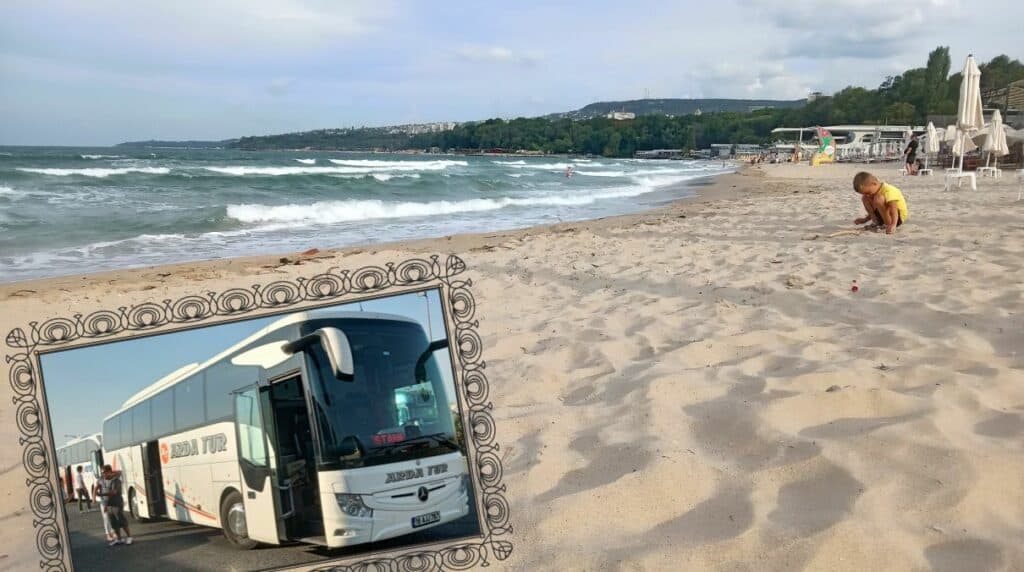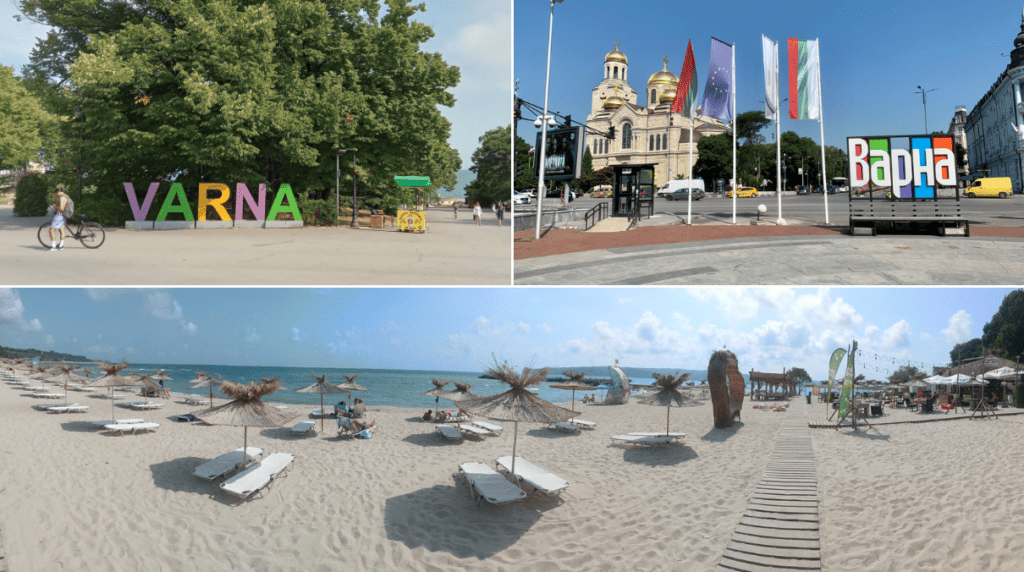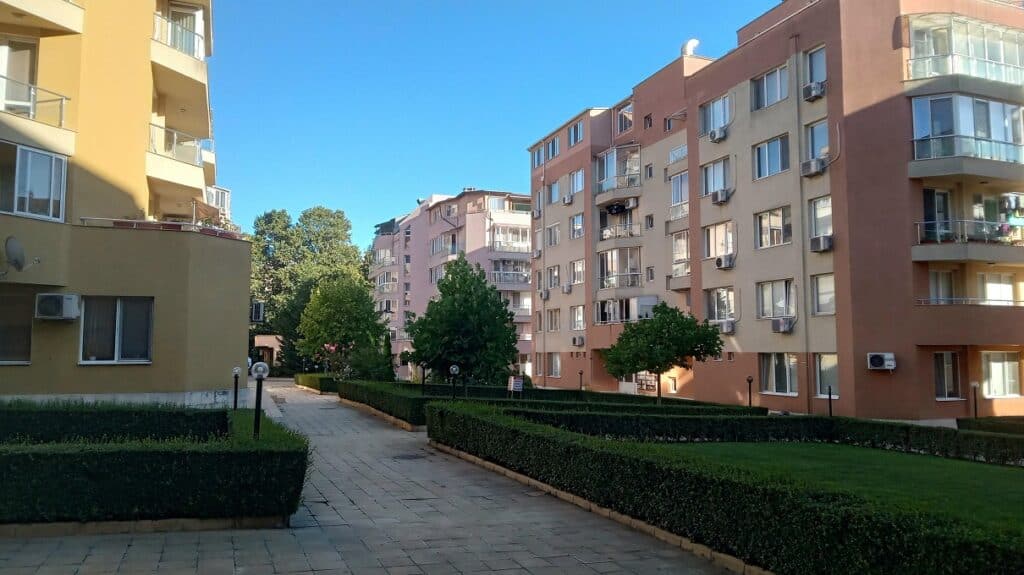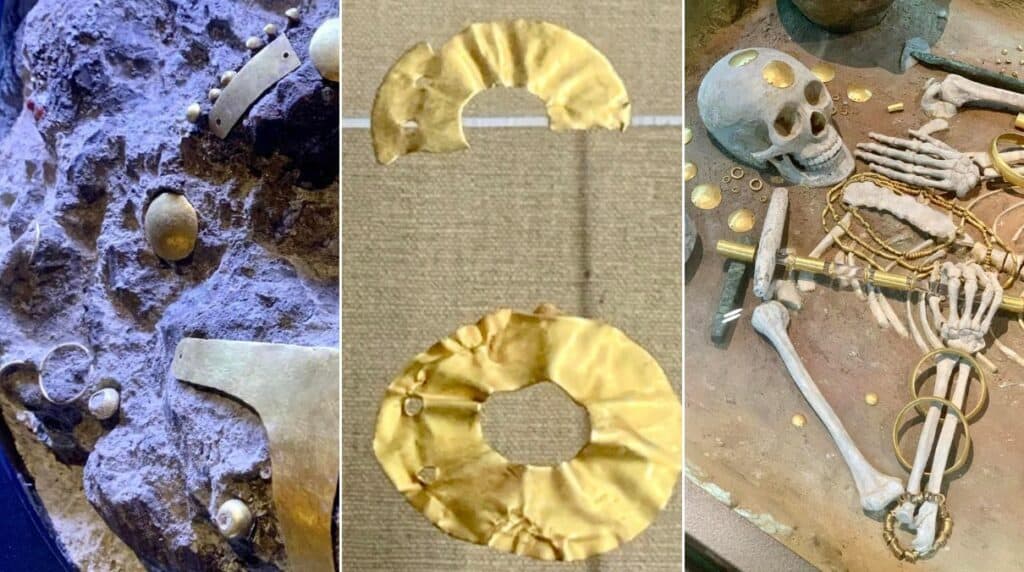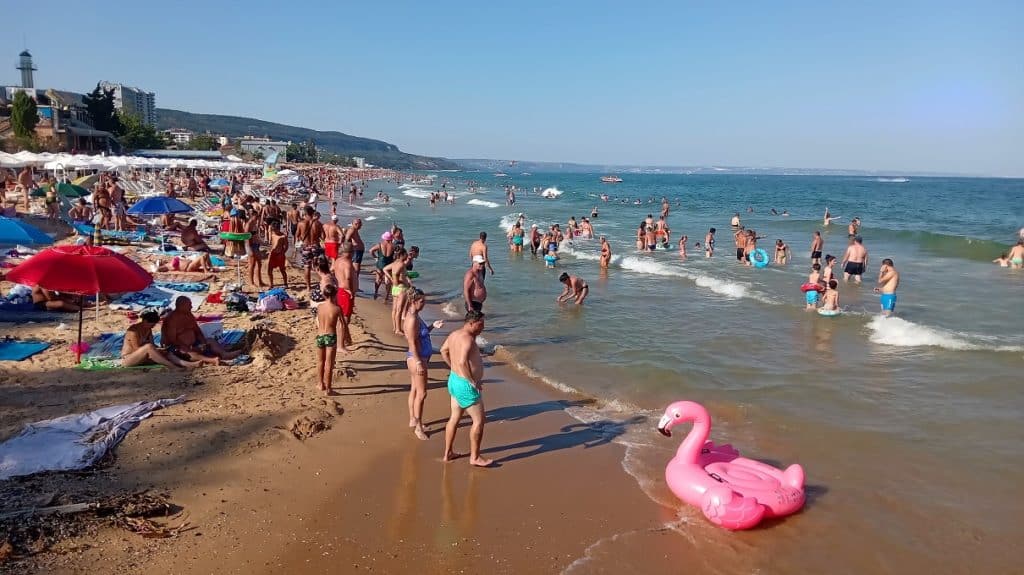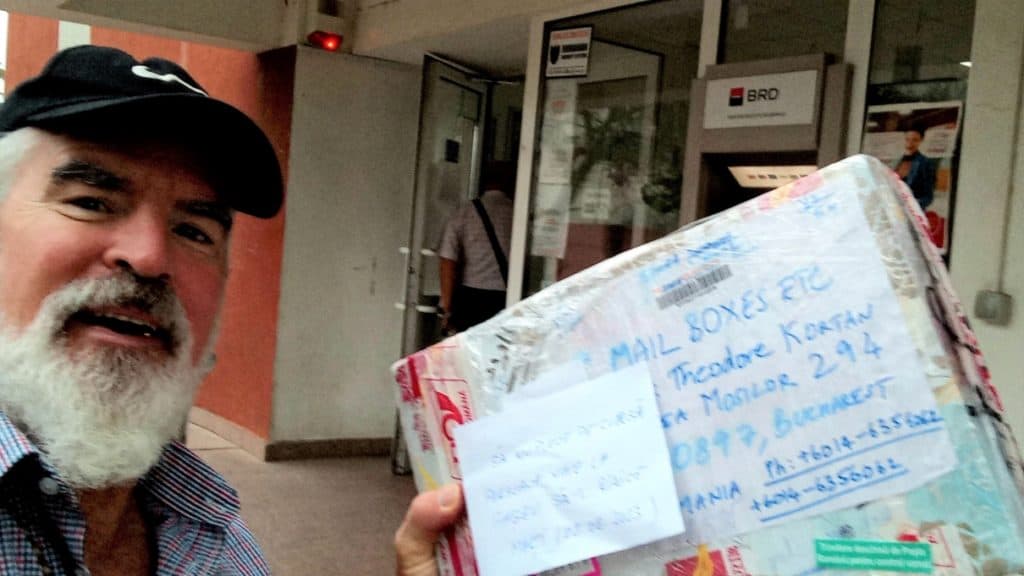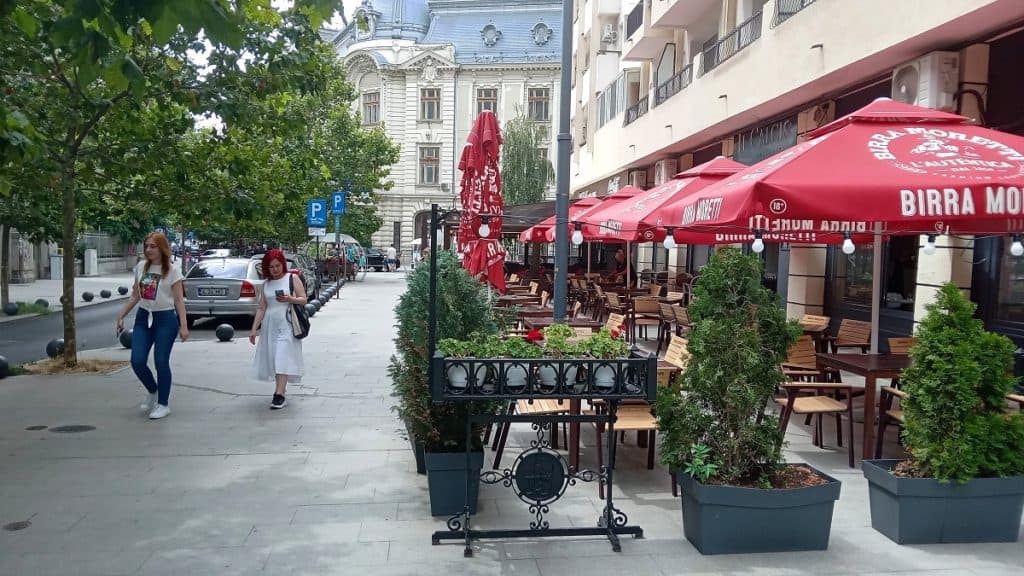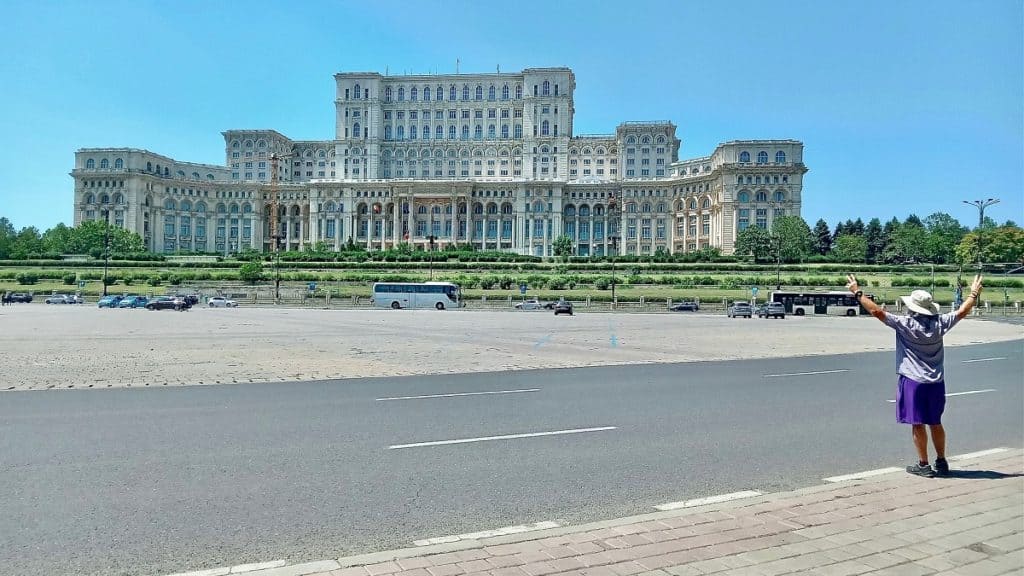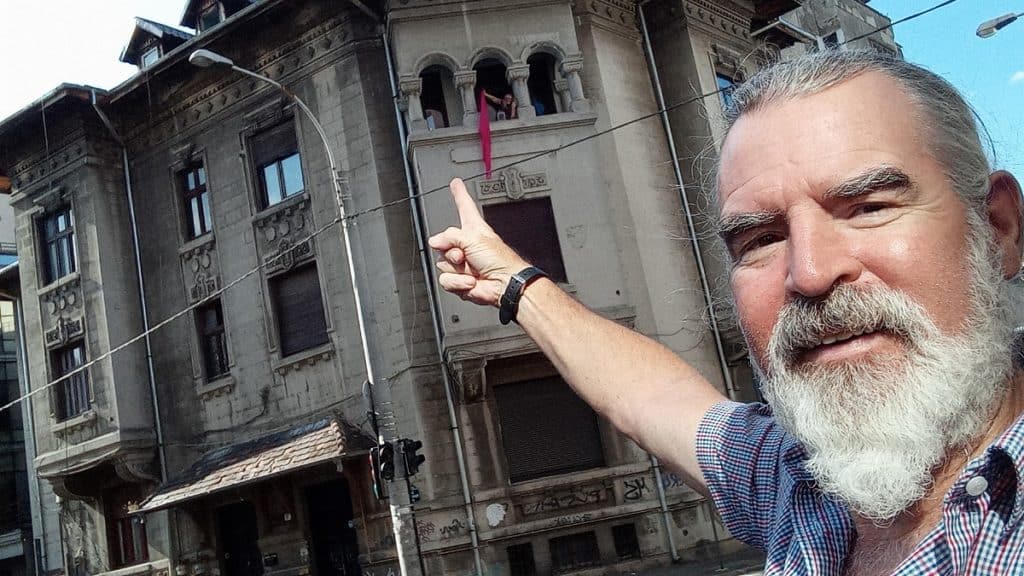Last Updated on October 25, 2024 by Ellen
Eastern Europe is still a bargain compared to wealthier western European nations. Spouse Theo wrote about how we kept our monthly budget under $2,000 for a month in Bucharest – and had a fabulous time! Our next month-long stop is the third-largest city on the Bulgarian Black Sea. And this post is what it’s like for slow travelers in Varna.
The region we’ve toured so far in Eastern Europe, which is only Romania and Bulgaria, still feels fresh — somewhat undiscovered by Americans. Theo believes this area will be the next ‘big thing’ as travelers check off Rome, Athens, Barcelona, Paris, etc., from their destination bucket lists.
What it’s like for slow travelers in Varna
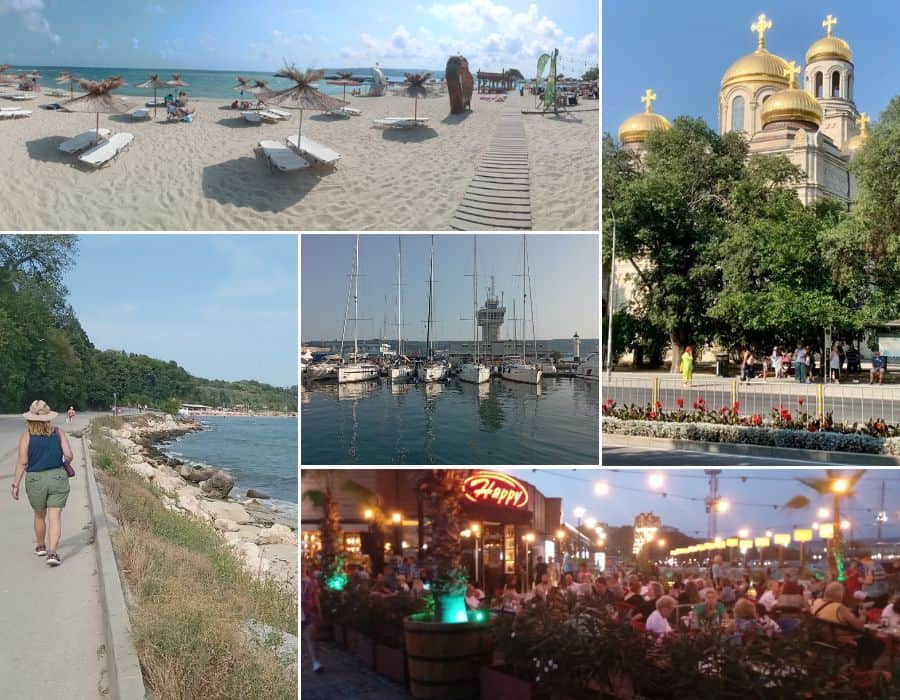
Language
Many people under 30 speak English, especially in the tourist areas around old town and the beach. Many older people know a few key words, too.
In tourist areas, signs are in English and Bulgarian. Restaurants have English version menus. But get outside the tourist zones, and you’ll be hard pressed to find English. This is similar to every country – where two realities exist: one for tourists, one for locals. We slow travelers witness both worlds.
Lay of the land
The Black Sea and Varna’s beaches are delightful. A walkway connects Varna Beach near old town to other beaches, and it’s only a couple of kilometers north to the famous Golden Sands area.
To the west of the sea in Varna is the Sea Garden, the largest landscaped park in the Balkans. It has miles of walkways – some spots with scenic views, monuments and markers for Bulgarian Olympian champions.
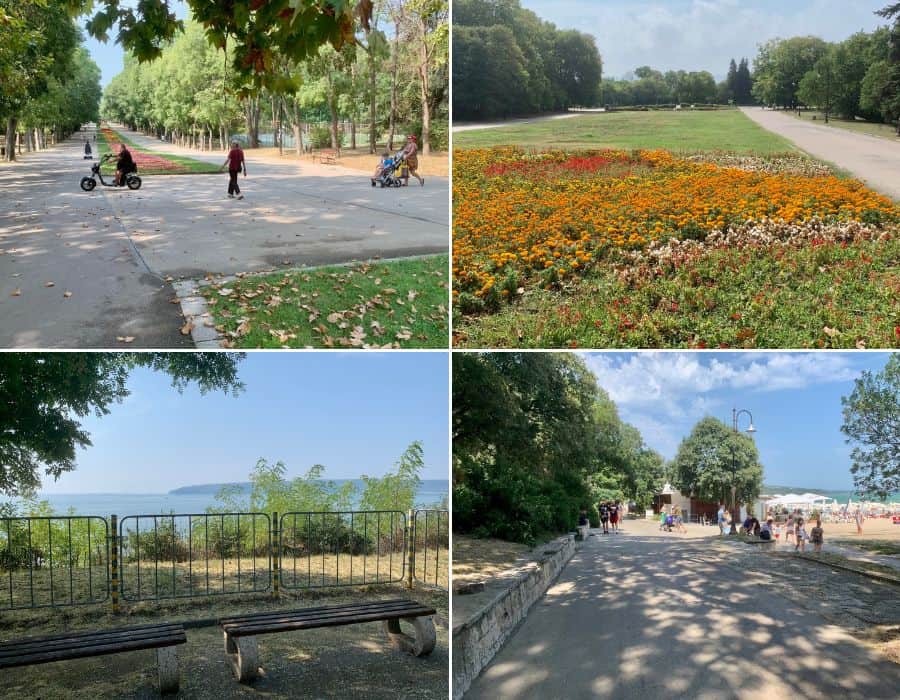
Tourists come to Varna for the beaches and its quaint, easily walkable old town. There are no ancient, uneven cobblestones here like in other Bulgarian destinations like Nessebar and Veliko Tarnovo.
Cafes, pedestrian boulevards, hotels, boutiques, and parks dominate old town.
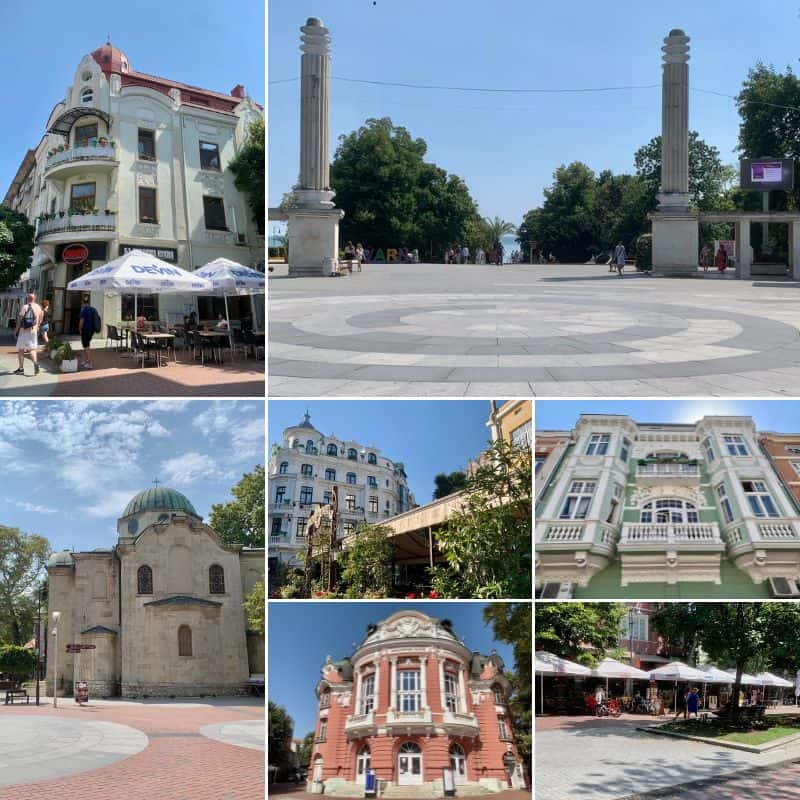
Roman ruins are in the middle of old town, too. They sit in the middle of 19th and 20th century architecture.
Some ruins are encased on pedestrian streets and on display under the floor at the old town Starbucks.
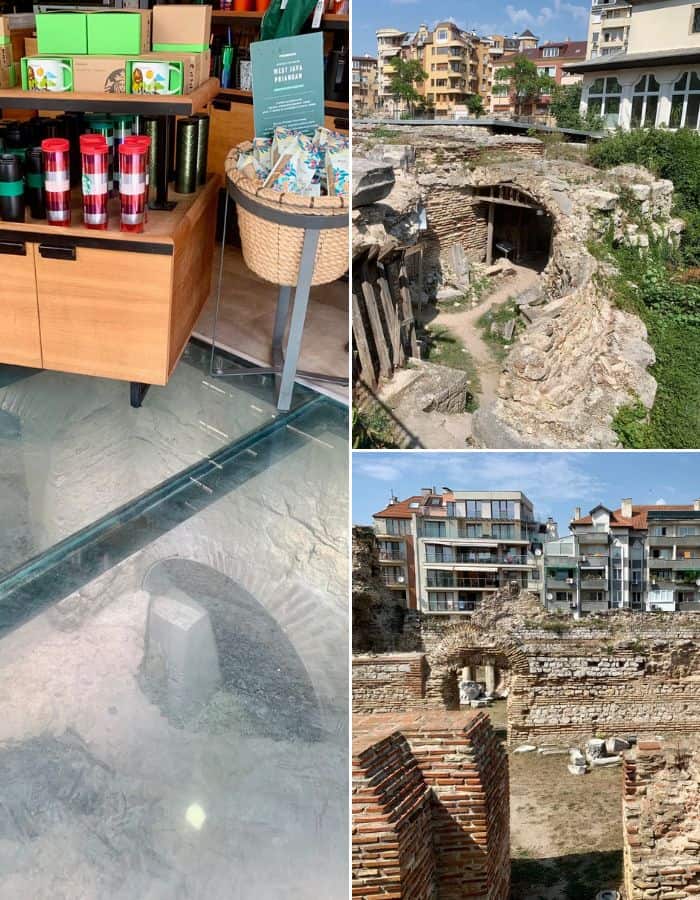
The Greeks also were in Varna, but the city’s history goes back even further — with the discovery of the world’s oldest gold collection dating back some 6,000 years ago!
Keep going west of old town for plenty more shops and restaurants on a long boulevard – Route 2.
Along both sides of Route 2 headed west are ‘regular’ neighborhoods, and eventually the Western Industrial Zone and Lake Varna to the south of Route 2. Between Rt. 2 and north to the city’s plateau are some major housing construction projects. Further west is the airport.
The people
People are polite and helpful, as they are all over Earth. Locals are a bit curious about me as an American living among them for a month. I’m used to that by now – we’ve been living this way since 2015.
In Varna, as in the rest of Bulgaria, some older people wish they could return to the communist days when everyone had a job and wealth was more equally spread around. Up to 35 percent of Bulgaria’s older population is in poverty. Not everyone advanced when the country entered the free market in 1990.
Varna’s unemployment rate is just 1.7%, according to the nation’s Statistical Institute. The average annual salary for workers under a labor contract in Varna was 17,300 lev, or about $9,500, as of 2021.
Overall, Bulgaria ranks in the bottom 10 of EU nations for income. At the time of this writing there are protests in Bulgaria’s capital Sofia against taking down monuments from the communist era. There are pro-Kremlin people in government, and a Socialist Party that is the successor to the Communist Party.
And yet. Bulgaria has helped Ukraine defend itself against Russia. Varna hosts a United Nations safe location for Ukranian women and children refugees. It has a major Black Sea port that takes Ukranian grain to help feed the world.
Still, the nostalgia of communist rule helps make the taxi union so strong that ride shares like Grab or Uber are banned from Bulgaria.
Transportation
First, walking. Aside from the beach walkway and Sea Garden, locals enjoy sidewalks in most neighborhoods. Lanes for bicycles and electric scooters – common here – are on main roads.
Pedestrian tunnels are at major intersections, and there are crosswalks all over town because pedestrians have the right of way.
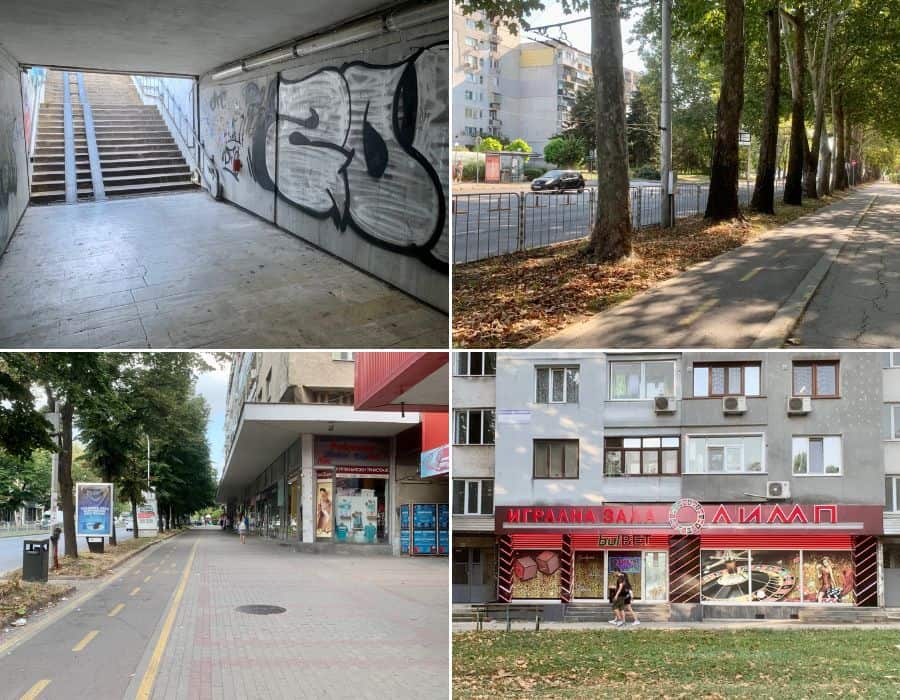
The bus system is a little weird. The times for buses on Google Maps are not to be trusted, and ticket machines on buses sometimes don’t work. Some bus stations have digital arrival boards, but even those don’t always work.
The ‘409’ bus runs down Routes 2 and 9. There is a conductor who will sell you a ticket (2 lev – $1.10). This ticket cannot be used on other buses. All other buses have ticket machines. These tickets can be used to transfer to another bus within one hour (2 lev) or 90 minutes (2.5 lev – $1.38).
Bus attendants scan tickets and transit cards to check passengers on most buses at all times of the day.
Cabs are around the malls and close to old town, but outside those areas, you might not see one. Like everywhere else on Earth, if a cabbie doesn’t use the meter, don’t get in.
Price examples for slow travelers in Varna
Groceries
The cost of living is affordable for slow travelers in Varna.
Theo has bought beer for 50 cents a can on sale. A liter of milk is less than $1.30, a loaf of seeded grain bread is the same. A pound of basic Bulgarian cheese is 10 to 15 lev ($5.50 – $8.30). Eggs are $3.50 for 10 medium eggs.
Certainly not as cheap as Asia, but manageable if you’re a smart shopper. Don’t overlook clearance sections and local produce markets!
TIP: The Bulgarian version of Costco — Metro — is on the western side of town. Tourists without membership cards can still buy goods. visit the help desk for a temporary ticket to take to the register.
Airbnb
Our Airbnb rental is about 2.5 miles west on Route 2 from the middle of the tourist action. that’s far enough to feel like a local, and only a 15 or 20 minute bus trip into town.
Our modern one-bedroom apartment (clothes washer, dishwasher, AC, blazing fast WiFi, espresso machine) is in a local neighborhood. It costs is $560 for 28 nights.
Airbnb prices closer to the beach are easily $1,000 and up for a similar one-bedroom apartment — roughly double what we paid!
Personal
A woman’s salon haircut is 30 – 40 lev ($16.50 – $22) in local neighborhoods. It’s 40 – 60 lev ($22 – $33) closer to the tourist zone where stylists speak English.
A man’s hair clipper can be had for $13 at Metro (see info box above).
Shopping
There are three major malls in Varna. Grand Mall and Delta Mall with high-end stores, and Varna Mall with mid-range stores. Doesn’t seem like enough demand for all of these malls and all of the clothing shops along Route 2 near old town, but there are hardly any vacant storefronts.
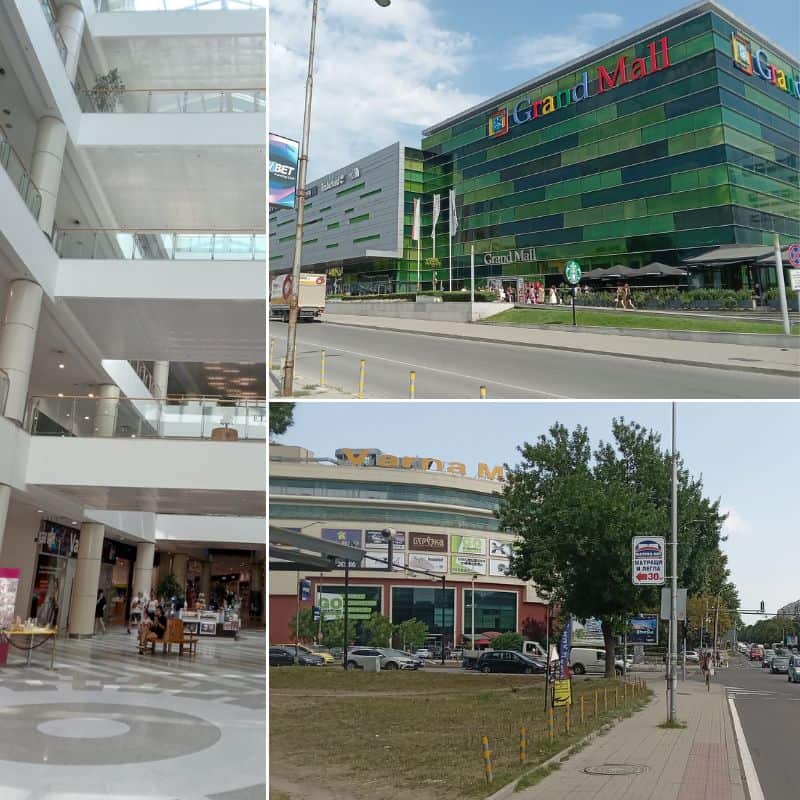
Second-hand clothing stores are all around town, mostly on or near Route 2 and the neighborhoods on either side of that street leading to old town.
Vices
Vices abound in Varna. Many people smoke (as in all of Bulgaria, and also Romania). Thankfully, the beaches are NOT ashtrays and most people seem to throw their butts in garbage bins. Liquor is readily available everywhere. Gambling halls are common in average neighborhoods, and there are casinos in the tourist zones.
Shoulder season for slow travelers in Varna
September is a shoulder season month for slow travelers in Varna. Beach crowds thin as families get back to the school year. We have an oldie but goodie post about shoulder seasons if you’re new to slow travel.
Leaves fall rapidly from trees, the air is cooler during my morning walks. The moon marks time from waxing to waning, and we get to enjoy it all. Slowly, leisurely, gratefully.
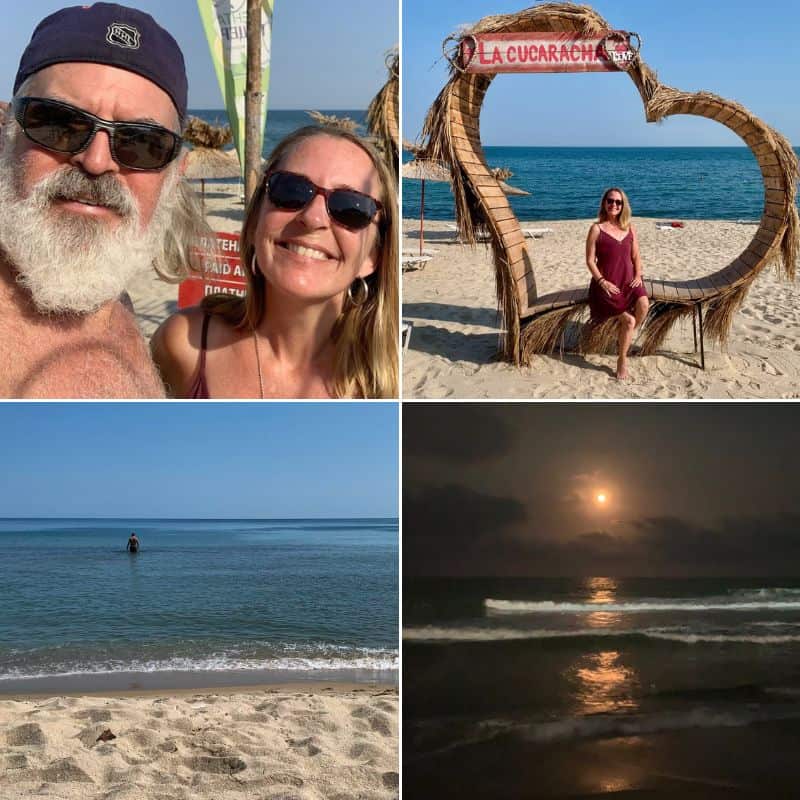
Thanks for reading, “What slow travel is like in Varna, Bulgaria.”
More about Eastern Europe:

